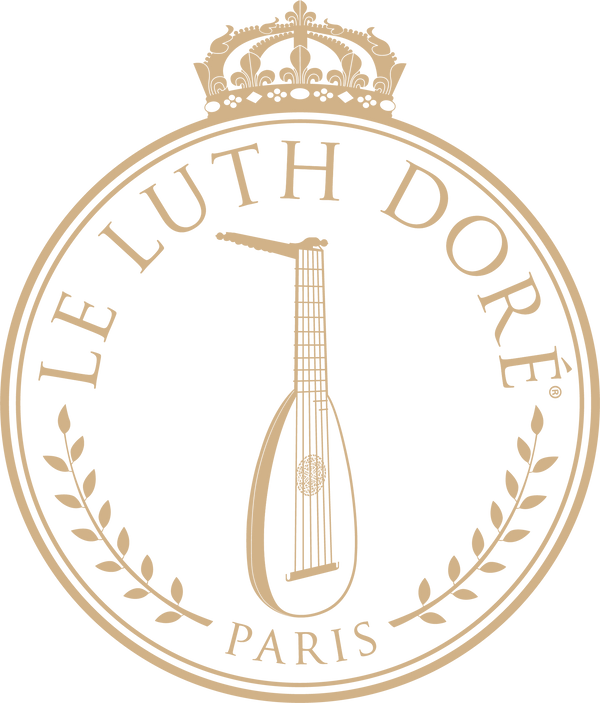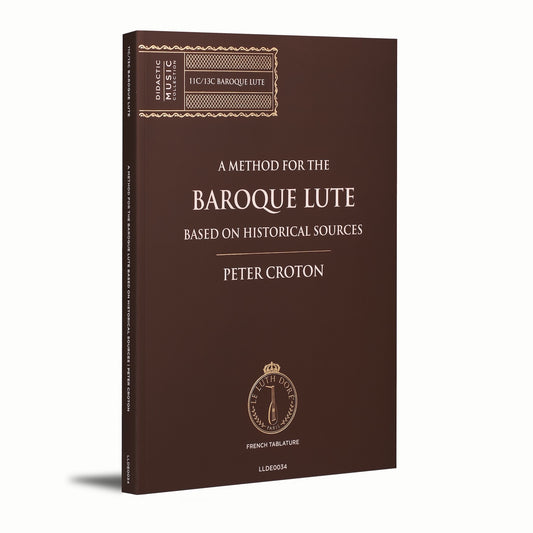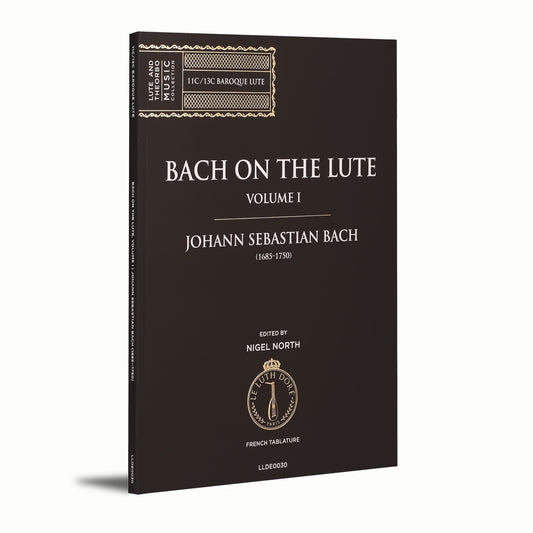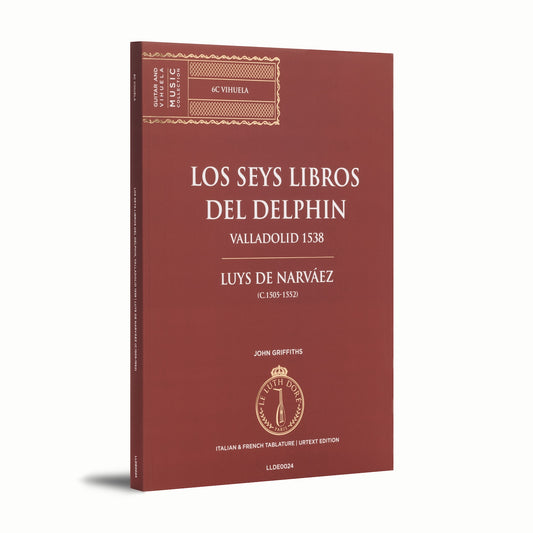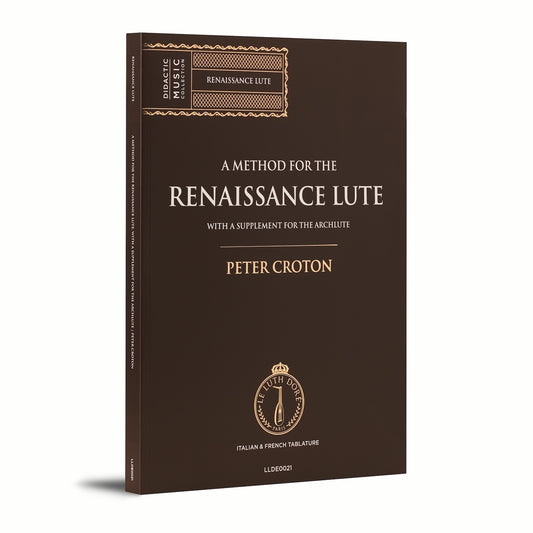Peter Croton and the Art of the Lute – Two Methods Based on Historical Sources
Partager

Lutenist, pedagogue, and scholar, Peter Croton has established himself as a key figure in the rediscovery and transmission of the art of the lute. His two methods, directly inspired by historical sources, offer today’s musicians an authentic and vibrant gateway into the world of the Renaissance and Baroque. Drawing upon original treatises and his internationally acclaimed performing experience, Croton provides a rare pedagogical resource — both scholarly and profoundly musical.
The study of historical performance practice gives us more understanding, and – in bringing us closer to the essence of the music – more possibilities for moving our listeners.

A method rooted in tradition
Peter Croton’s first method, A Method for the Renaissance Lute, is intended for musicians seeking to explore the repertoire and techniques of the Renaissance lute. Grounded in historical sources and treatises from the 16th and early 17th centuries, it offers a comprehensive approach that unites instrumental practice, musical rhetoric, and stylistic awareness. Croton develops a progressive pedagogy attentive to posture, touch, and the understanding of historical tablatures, providing a vivid entryway into the works of composers such as Francesco da Milano, Hans Newsidler, Adrian Le Roy, Melchior Neusidler, John Dowland, and Valentin Bakfark. The volume thus serves as a bridge between original sources and contemporary performance practice, in a spirit faithful to the principles of historically informed interpretation.
This 281-page volume stands out from all other existing lute manuals. It includes chapters on historically informed performance, an introduction to anatomy and biomechanics, preparation for playing, tuning, instrument position, right- and left-hand exercises, ornamentation, polyphony, and—uniquely—chapters devoted to the ten-course lute and the archlute.
It also features numerous examples of tablature in facsimile. The entire work is meticulously presented and of exceptional usefulness for both student and teacher. It represents a true advancement in lute pedagogy.



Peter Croton highlights the essential foundations — posture, chord playing, counterpoint, and ornamentation — situating them within a historical framework informed by original sources. The work stands out for its clarity, its focus on relaxed and expressive playing, and its constant encouragement toward a personal interpretation that is both informed and creative.
The result of many years of research and teaching, this volume combines musicological rigor with pedagogical accessibility. Illustrated with examples drawn from historical sources, it serves both as a practical manual and a reflective guide, offering a clear and inspiring path for anyone wishing to deepen their understanding of the art of the Renaissance lute.

Peter Croton has produced a comprehensive and significant work that explores a wide range of subjects related to lute playing. I regard this work very highly and would recommend it to anyone interested in learning the instrument.
One of the book’s most remarkable qualities is its detailed and thorough exploration of the mechanics of the hands and body, combined with the psychological aspects of learning. Its second major strength lies in the method itself—progressive and methodical—forming a well-designed program of exercises and short pieces perfectly suited to the beginning student.
The author rightly reminds us that rhetoric is the central point around which all expressive means revolve. This perspective is reflected in many of the exercises, where the student connects a musical gesture to a rhetorical articulation, thereby developing immediate expressiveness. This book serves both as a structured framework for beginners and as an essential reference for more advanced musicians.

The Central Role of Musical Rhetoric
Croton’s pedagogy emphasizes the art of rhetoric, omnipresent in historical treatises. Playing the lute thus becomes an oratorical act: phrases are to be understood as speeches, articulated with eloquence and clarity. This vision renews lute teaching by restoring to it its original expressive dimension.
Peter Croton’s A Method for the Renaissance Lute is a method that begins with the fundamentals and approaches lute playing from a genuinely holistic perspective. The attention given to physical foundations helps prevent potential bodily strain in the student. Through this bodily awareness, a more relaxed and musical style of playing can be more readily achieved.
It is clear that the author is an experienced pedagogue whose main concern is that his students play the lute with minimal effort while developing their own musical expressiveness. The work does not encourage the slavish imitation of a given interpretation but rather opens space for personal growth. In this respect, it can also serve as a valuable resource for advanced lutenists wishing to rethink their technique and musical approach.

An Opening Toward the Baroque Repertoire
The second method, dedicated to the baroque lute, extends the approach into the 17th and 18th centuries. It explores major works by composers such as Kapsberger, de Visée, and Weiss, integrating harmonic complexity and the richness of the basso continuo.

| Renaissance Lute Method | Baroque Lute Method | |
| Sources | Ortiz, Le Roy, Dowland, Besard, Galilei – 16th-century corpus from Italy, France, and England. | Gaultier, Mouton, De Visée, Weiss – 17th–18th-century corpus, primarily from France and Germany. |
| Pedagogical Focus | Technical foundations: posture, chord playing, simple arpeggios, diminution, and elementary counterpoint. A progressive approach designed to build a solid practice. Also includes a section on basso continuo and the archlute. | Technique and style of the Baroque lute: chordal playing, arpeggios, advanced counterpoint, Baroque ornamentation, and expressive nuance. Includes an introduction to basso continuo for the Baroque lute in D-minor tuning. |
| Public | Adult beginners, advanced students, and conservatory learners. Designed to be clear, progressive, and accessible while maintaining scholarly rigor. | Beginning students and advanced players wishing to approach or deepen their study of the Baroque lute. Also suitable for musicians interested in exploring the later repertoire (17th–18th centuries). |
| Highlights Noted by Reviewers | Pedagogical clarity, balance between theory and practice, accessibility for non-specialists, and an invitation to develop a personal interpretation. | Breadth of sources used, richness of the Baroque repertoire presented, balance between academic rigor and pedagogical clarity, and a focus on historically informed yet vibrant interpretation. |


In this work, Peter Croton develops the essential principles of Baroque playing—chordal textures, arpeggios, counterpoint, ornamentation, and basso continuo—situating them within their historical and stylistic context. The book stands out for its pedagogical clarity, its balance between theory and practice, and its ability to foster a vivid and historically informed interpretation.
The result of extensive research and practical experimentation, this method provides an invaluable tool for both learning and performance. It serves as a bridge between contemporary musical practice and historical traditions, enabling lutenists to approach the Baroque repertoire with renewed sensitivity and a deep understanding of its expressive language.
Peter Croton’s opus magnum, A Method for the Baroque Lute based on Historical Sources, may well inspire the long-awaited and much-needed discussion within the lute world. This 336-page book, long anticipated, represents an ambitious undertaking: the author seeks nothing less than to restore the instrument to its historical context and, beyond that, to present a coherent methodology capable of bringing lasting evolution to the world of the lute.
The work offers a systematic overview of the current state of research and—firmly oriented toward performance—sets forth a “new” (in fact, old) way of playing, grounded in our historical and organological knowledge while extending it into practical musicianship. Anyone truly interested in a historically informed approach to the Nouveau Accord Ordinaire—now somewhat superficially referred to as the “Baroque lute”—will find this publication indispensable. Written in clear English and beautifully printed, this book is therefore highly recommended to all serious players devoted to the culture of 18th-century lute music.

The Art of the Baroque Lute Explained by Peter Croton
A Reference for the Future
By uniting historical sources with the living experience of performance, Peter Croton offers two methods that stand as essential references for the study of the lute. More than pedagogical tools, they form a genuine bridge between past and present, enabling each performer to enter the art of the lute with depth and authenticity.

He has taught for many years at the Schola Cantorum Basiliensis in Basel and at the Hochschule der Künste Bern, where he has trained several generations of lutenists and continuo players. His concert and recording activity—praised by international critics—is complemented by deep reflection on musical rhetoric and pedagogy.
Author of several major reference works, including A Method for the Renaissance Lute and A Method for the Baroque Lute, published by Le Luth Doré Urtext Editions, he continues to pursue work at the intersection of historical research and artistic expression, remaining faithful to the humanist ideals of early music.
